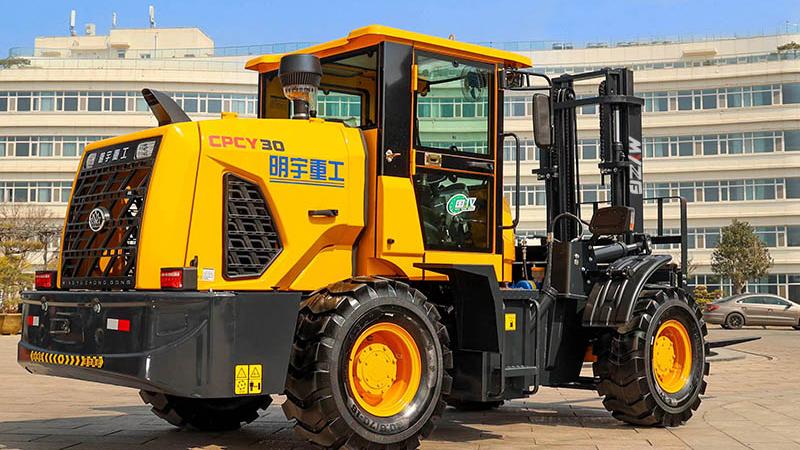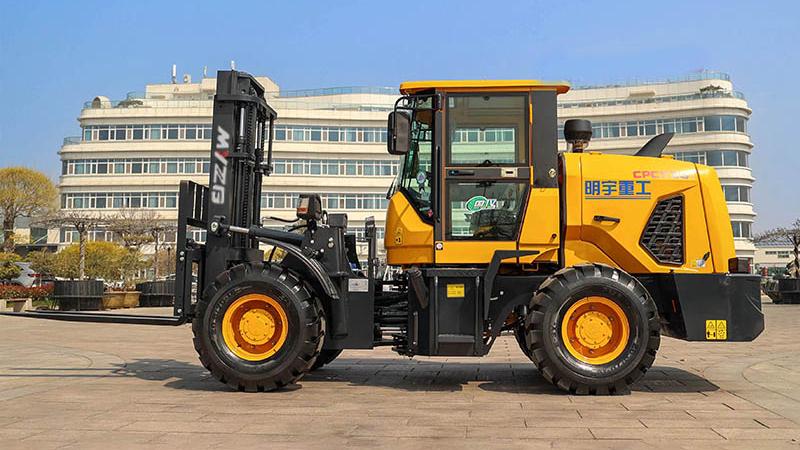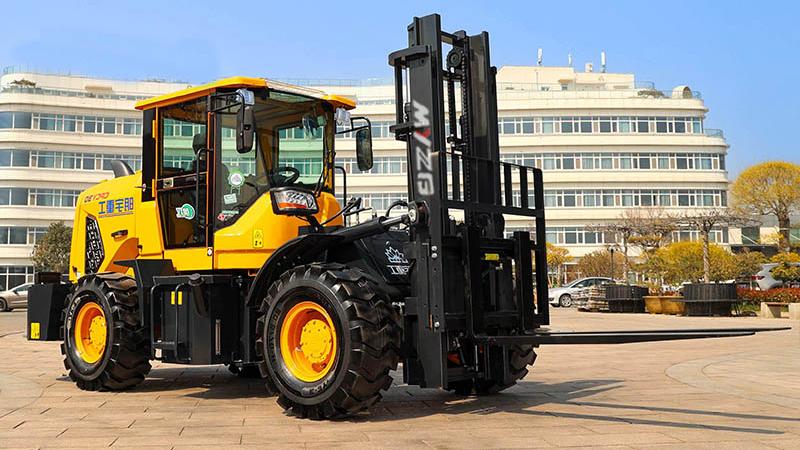The central question of whether an all-terrain forklift can operate on muddy or uneven ground receives a resounding affirmative, as this is the very purpose for which these robust machines are engineered. Unlike their indoor-centric counterparts, the counterbalance and reach trucks, all-terrain forklifts—often categorized as rough-terrain models—are specifically designed to conquer the unpredictable and demanding conditions of outdoor worksites. Their fundamental capability hinges on a suite of specialized features that collectively transform them from mere material handlers into mobile, stable powerhouses on unstable surfaces. The most critical of these features are their large, deep-treaded pneumatic tires, which provide the essential flotation and traction needed to navigate soft, yielding ground like mud without becoming instantly bogged down. These tires, combined with a powerful four-wheel drive system, allow the forklift to distribute its weight and power effectively, gripping the terrain and pushing through obstacles that would immobilize a standard forklift. Furthermore, a robust chassis with high ground clearance is paramount, preventing the undercarriage from scraping against or becoming high-centered on ruts, bumps, and other irregularities common on construction sites, farms, and lumber yards. This foundational design philosophy acknowledges that the world outside the warehouse floor is not flat, smooth, or predictable, and the machine's architecture is a direct response to that reality, making operation on muddy and uneven ground not just possible, but a core operational expectation.
Delving deeper into the engineering marvels that enable this off-road prowess, it is essential to understand the synergy between the powertrain, suspension, and structural components. The powertrain of a capable all-terrain forklift is not merely an adapted version of an indoor model; it is often a high-torque diesel engine designed to provide consistent power at low RPMs, which is crucial for climbing gentle inclines on loose soil or pushing through a patch of thick mud. The transmission, frequently with multiple gears and a torque converter, allows the operator to select the appropriate power and speed setting for the terrain, much like a dedicated off-road vehicle. Perhaps the most significant mechanical differentiator is the incorporation of a robust four-wheel drive system, which ensures that power is delivered to all wheels, dramatically increasing traction and reducing the likelihood of a single wheel spinning uselessly in a mud hole. Complementing this is the suspension system. While some models use a rigid axle suspension for ultimate durability and load-bearing capacity, others may incorporate more advanced independent suspension or oscillating axles to maintain tire contact with the ground even over severe bumps and dips, thereby enhancing both stability and traction. This is coupled with the critical role of the large, air-filled pneumatic tires. Their ability to deform and conform to the ground surface increases the contact patch, improving grip and absorbing shocks that would otherwise be transferred directly to the chassis and the load, a vital feature for preserving both the integrity of the palletized goods and the long-term health of the forklift itself.
However, the mere possession of an all-terrain forklift does not grant carte blanche to operate with impunity in any and all conditions. There are profound and critical limitations and safety considerations that must be rigorously observed to prevent catastrophic accidents, such as tip-overs or load drops. The number one rule, often emphasized in training and operator manuals, is that the machine's inherent stability is drastically reduced on uneven ground. A load that is perfectly safe to lift to full height on a level, concrete surface can become a tipping hazard on a slight side slope. Therefore, load capacity charts, which are specific to each model, must be de-rated when operating on non-level ground; the exact de-rating factor depends on the slope and the forklift's design, but the principle is universal: carry less, carry lower, and move slower. In muddy conditions, the primary risks are getting stuck and loss of lateral stability. Even with four-wheel drive and aggressive tires, there is a limit to the depth and viscosity of mud that can be safely traversed. Operators must be trained to assess terrain, identify hidden hazards like deep ruts or submerged debris, and understand the machine's approach, departure, and break-over angles to avoid becoming high-centered. Furthermore, the mast's stability is paramount; lifting a load with the mast tilted forward on a slope can create a dangerous pendulum effect, shifting the combined center of gravity and precipitating a forward tip-over. Thus, safe operation is a complex interplay of machine capability, informed risk assessment, and disciplined adherence to degraded operational parameters.
In conclusion, the application of all-terrain forklifts in muddy and uneven environments is a testament to their specialized design, making them indispensable assets across a wide spectrum of industries. From the construction site, where they move pallets of block and roofing materials across freshly graded, rutted earth, to the agricultural field, where they handle hay bales and supplies on soft, rain-soaked ground, these machines enable productivity where standard equipment would fail. They are equally vital in lumber yards, ports with unpaved storage areas, and large-scale landscaping projects. The key to harnessing their full potential lies in a holistic approach that pairs the right machine for the specific job and typical terrain with a comprehensively trained and vigilant operator. It is not enough to simply have a rugged forklift; the human element is the final, critical component in the safety equation. Operators must be drilled in pre-operational inspections of tires and brakes, understand the severe implications of operating on slopes and soft ground, and possess the judgment to know when conditions have deteriorated to a point that operations must cease. Therefore, while an all-terrain forklift is unequivocally capable of operating on muddy or uneven ground, its successful and safe deployment is a function of superior engineering, prudent operational practices, and unwavering human oversight, ensuring that this powerful tool enhances productivity without compromising safety.
Post time:Nov.03.2025



